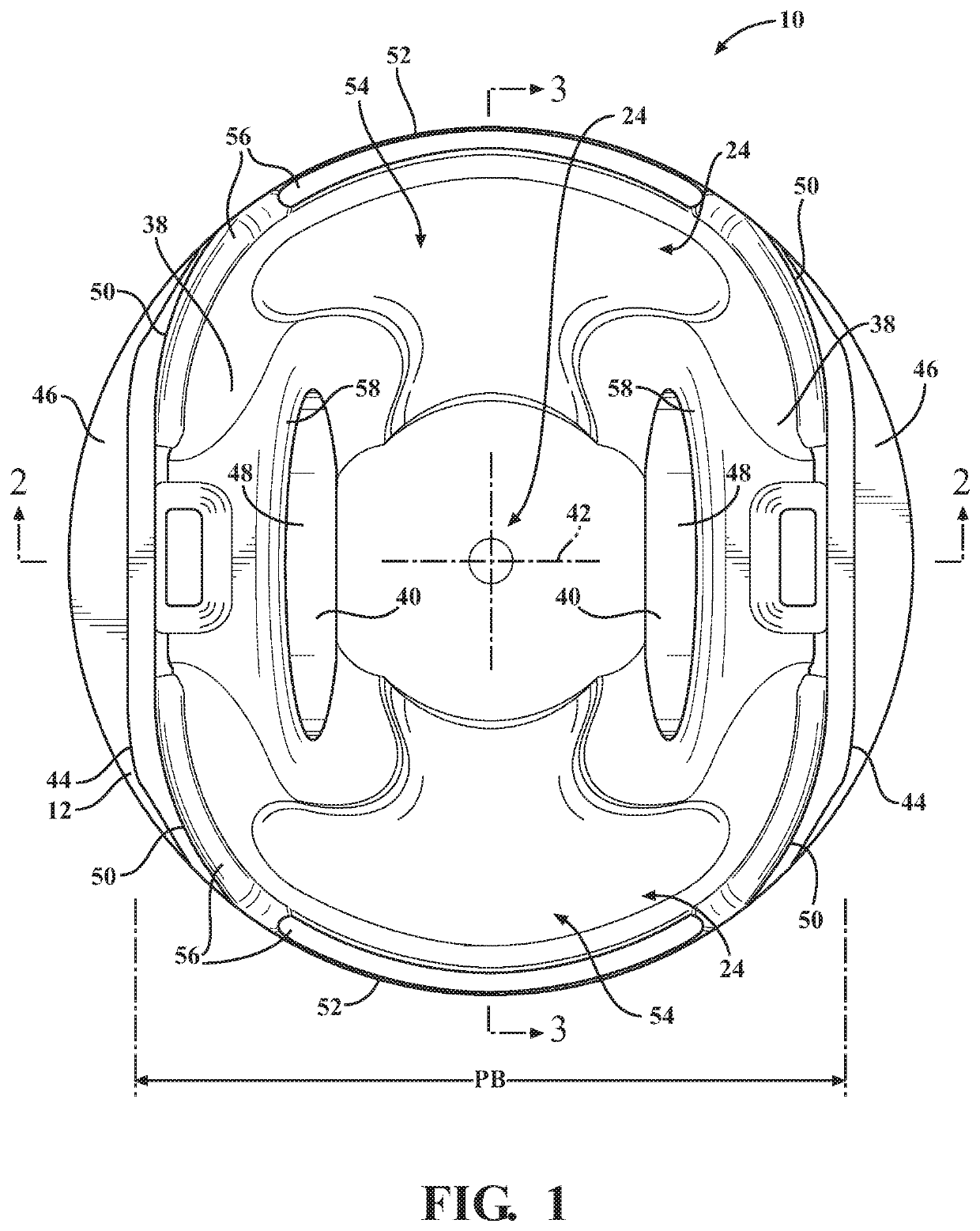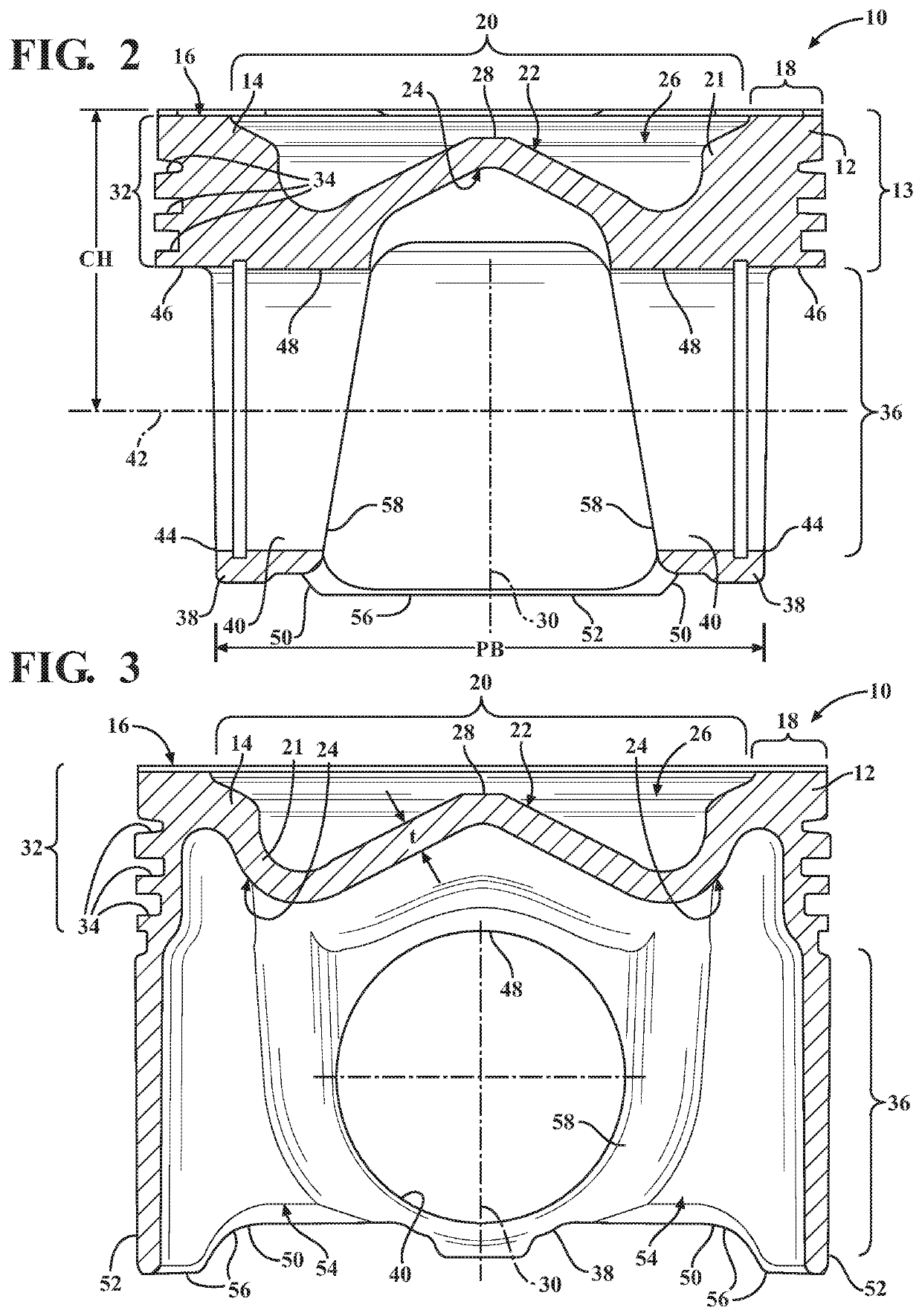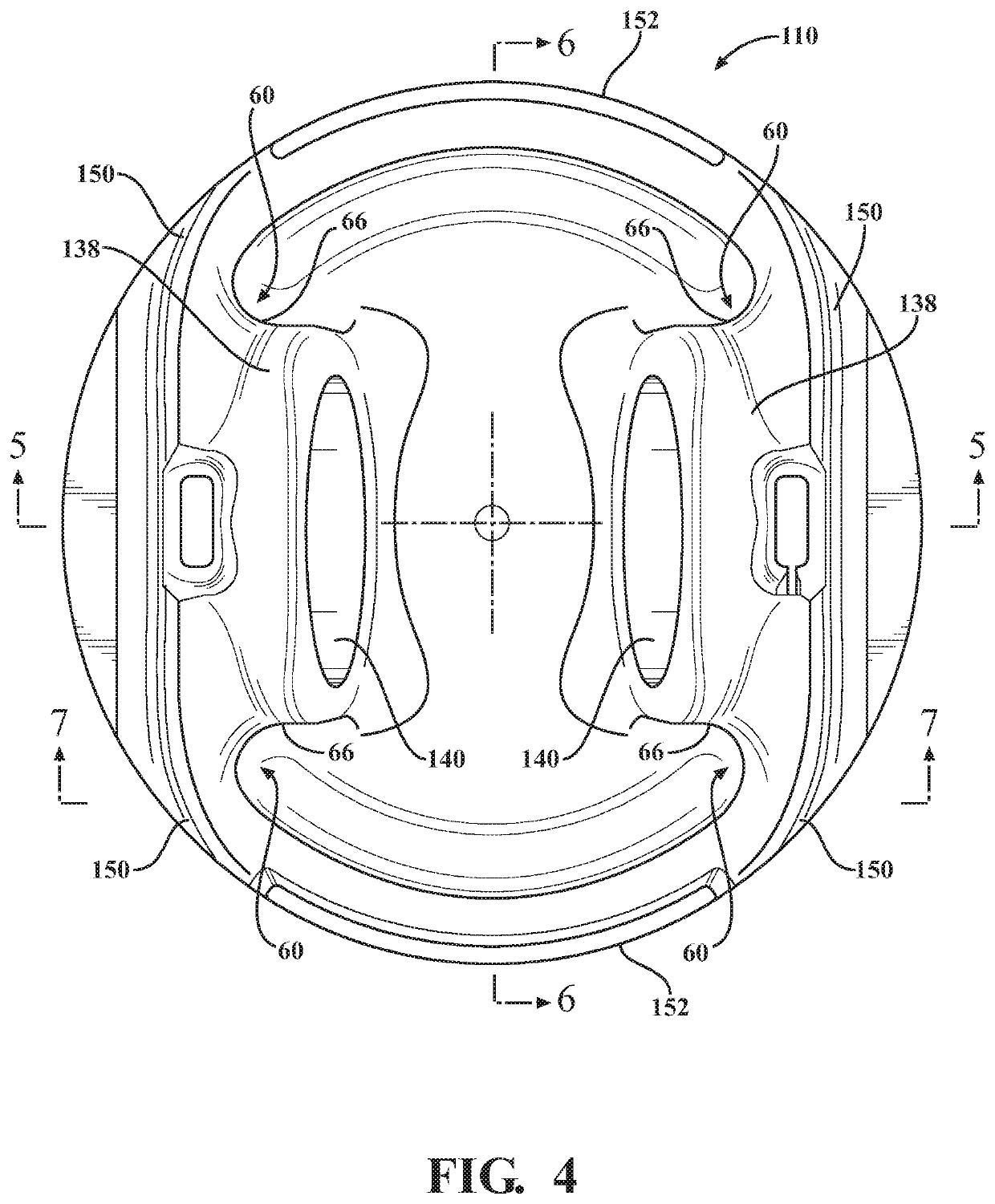Robust, lightweight, low compression height piston and method of construction thereof
a piston and compression height technology, applied in the field of pistons, can solve the problems of limiting the degree to which the piston compression height, the overall piston size and mass can be decreased, and the troublesome, etc., and achieves the effects of reducing the cost associated with the manufacture of the piston, increasing the compression load, and increasing strength and durability
- Summary
- Abstract
- Description
- Claims
- Application Information
AI Technical Summary
Benefits of technology
Problems solved by technology
Method used
Image
Examples
Embodiment Construction
[0040]Referring in more detail to the drawings, FIGS. 1-3 illustrate views of a piston 10 constructed in accordance with one presently preferred embodiment of the invention for reciprocating movement in a cylinder bore or chamber (not shown) of an internal combustion engine, such as a modern, compact, high performance vehicle engine, for example. The piston 10 is constructed having a monolithic body 12 formed from and / or as a single piece of material, such as via machining, forging, additive manufacturing processes (including but not limited to 3-D printing) or casting, with possible finish machining processes performed thereafter, as desired, to complete construction. Accordingly, the piston 10 does not have a plurality of parts joined together, such as upper and lower parts joined to one another, which is commonplace with pistons having enclosed or partially enclosed annular cooling galleries bounded or partially bounded by a cooling gallery floor. To the contrary, the piston 10 o...
PUM
| Property | Measurement | Unit |
|---|---|---|
| surface area | aaaaa | aaaaa |
| outer diameter | aaaaa | aaaaa |
| non-circular shape | aaaaa | aaaaa |
Abstract
Description
Claims
Application Information
 Login to View More
Login to View More - R&D
- Intellectual Property
- Life Sciences
- Materials
- Tech Scout
- Unparalleled Data Quality
- Higher Quality Content
- 60% Fewer Hallucinations
Browse by: Latest US Patents, China's latest patents, Technical Efficacy Thesaurus, Application Domain, Technology Topic, Popular Technical Reports.
© 2025 PatSnap. All rights reserved.Legal|Privacy policy|Modern Slavery Act Transparency Statement|Sitemap|About US| Contact US: help@patsnap.com



